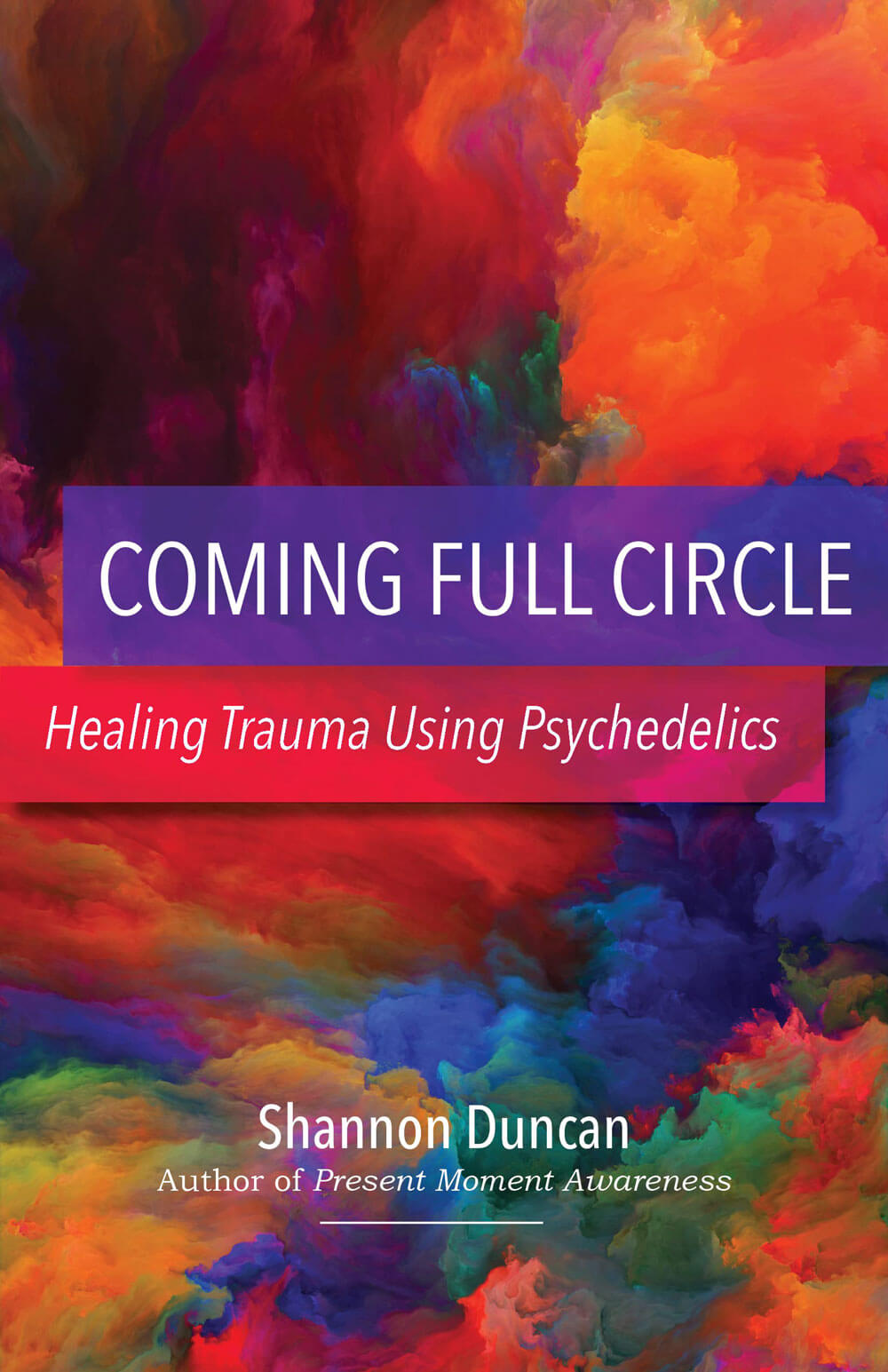Having never used psychedelics myself, I’ve been incredibly curious about their potential mental health benefits, especially after people like Neal Brennan (of 3 Mics fame) and Susan Sarandon recently opened up about their experiences with psychedelic substances in their quest for healing and mental expansion. In Coming Full Circle: Healing Trauma Using Psychedelics, Duncan provides a complete overview of everything someone interested in using psychoactive substances themselves would ever need to know.
Part one isn’t so much a how-to section, but a demystification and illustration of the facts pertaining to each substance. This style of presenting actual data rather than the frivolous new-age manner in which most information about psychedelics is conveyed really set me at ease and instilled a lot of confidence in what I was learning. Starting with a complete list of substances with psychoactive properties and thorough descriptions, the author moves on to provide detailed examples of the effects each one produces, and finally explains how they might assist in promoting mental wellness and moving mental blockages due to trauma. While recreational use is discussed and certainly not villainized in any way, the author mainly focuses on what is dubbed “medicine work” and coming into the experience provided by psychedelics in an authentic way that enhances and promotes healing rather than entertainment.
Part two is all about how to obtain psychedelic support or a trip guide, the safety and communication concerns surrounding the process, and how to consciously and gracefully move through the experience. Duncan explains that he wrote this book to be the guide he wished he had when he first started on his journey with psychedelics, and he has certainly succeeded. The entire book is strewn with personal examples of good and bad trips and the type of trauma Duncan’s trips have unlocked and consequently mended. He doesn’t shy away from discussing the shadowy side of healing this way and describes in great detail the processes that worked for him to get to the other side of them.
I was especially impressed with how rigorously detailed this entire guide was. Between the vulnerable honesty steeped into every chapter and the straightforward concern for those attempting to heal their trauma in this way, Duncan comes across like a genuine trip guide rather than the new age “shamans” promoting psychedelics for their own gain instead of for the good of those seeking help. So many of Duncan’s experiences with breakthroughs resonated heavily with the ones I experienced in standard therapy; I would absolutely recommend this book for readers who’ve never tried psychedelics but have experienced trauma and perhaps sought traditional methods of assistance, as well as seasoned trippers in need of a one-stop tome of information.

